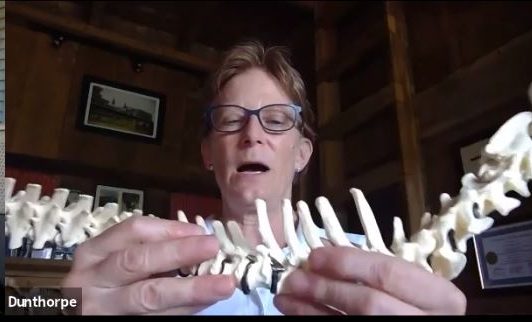Most of us probably know the word chiropractic. A lot of us have had it done for ourselves. But we may not have considered animal chiropractic care for our animals. I was excited to interview Dr. Kelly Foltman, DVM, CVC, CVA of Dunthorpe Farm Veterinary Services. Dr. Foltman specializes in several modalities, but today she’ll focus on animal chiropractic care.
I want to share what I learned with you. That way, you have more options when you see health changes in your animals.
Dr. Foltman and I both have office hours at the Veterinary Holistic Center in Springfield, Virginia. Working with professionals like Dr. Foltman, I learn new ways to keep animals healthy and on the planet longer. That’s what we all want for ourselves and our animals, right?
Here’s the interview.
Here are the highlights of Dr. Foltman’s interview
View the transcript: Interview with Dr Kelly Foltman, DVM
Chiropractic preserves the neuromuscular system
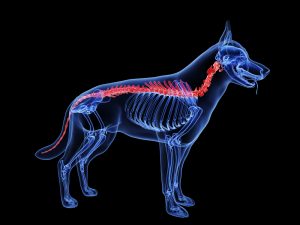 Basically, chiropractic focuses on the preservation of the neuromusculoskeletal system.
Basically, chiropractic focuses on the preservation of the neuromusculoskeletal system.
The brain modulates the central nervous system. It’s the motherboard. The spinal cord relays all the messages from the brain to the peripheral nervous system and back to the brain. And the spinal cord lies between each of the vertebrae of the spinal column so that the spinal column can protect the spinal cord.
Ninety percent (90%) of chiropractors’ work is on the vertebral column.
What’s the purpose of animal chiropractic care?
The purpose of animal chiropractic care is to have normal motion of the spine. Then our animals will have normal posture and normal movement.
What happens to vertebral/spinal joints?
People and animals have a lot of nerve endings within the joint capsule that cause pain. Whenever we have pain, then our muscles tighten up. This muscle tightening creates more pain and stiffness.
How does animal chiropractic care help those joints?
 Chiropractors enhance the motion around each of these joints so that they move properly, without pain and without restrictions. That way, the rest of the body can move properly into its best function.
Chiropractors enhance the motion around each of these joints so that they move properly, without pain and without restrictions. That way, the rest of the body can move properly into its best function.
And we (chiropractors) can potentially reduce inflammation and any arthritis of any of these joints, but also the areas that allow the nerves to exit the spinal cord.
Less arthritis!
A healthier spinal cord may lead to less arthritis as your animal grows older. That’s because they move more efficiently, more correctly. The more correctly they move, the less strain they put on the rest of their body.
We know aging is inevitable. But if we can improve things and slow down some of those aging processes, I do think that can help the longevity comfort level of the animal.
Dr. Foltman’s Animal Chiropractic Care
Competitive and trail horses
 My practice is about 70% horses. A lot of those horses are competitive horses, but a lot of horses are trail horses.
My practice is about 70% horses. A lot of those horses are competitive horses, but a lot of horses are trail horses.
I have some great trail-riding clients that realize that they put their horses through a lot going up and down the hills of Virginia, and whatnot, and rocky areas. They tend to do better if they are worked on chiropractically.
People with competitive horses found out about animal chiropractic care very quickly. There are such fine lines in competition between winning and losing. If you move more correctly, you take less time to either finish a race or it’s easier to complete a task. For dressage, it’s easier to follow the movements of the rider.
Small animal competitions – dog agility
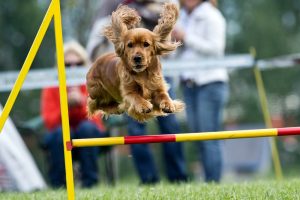 The small animal competitive world was the next group to come aboard. I have good clients tell me, “My dog has been great, but is having difficulty coming into the weaves or having trouble getting over the A-frame,” whatever the issue. Sometimes that tells me a little bit about what to expect with that animal.
The small animal competitive world was the next group to come aboard. I have good clients tell me, “My dog has been great, but is having difficulty coming into the weaves or having trouble getting over the A-frame,” whatever the issue. Sometimes that tells me a little bit about what to expect with that animal.
Injuries
I do more and more dogs, and cats, and horses that have had injuries. Regular veterinarians now refer to me post-injury to help with the healing process.
Geriatric patients
I get a lot of geriatric animals for animal chiropractic care. I don’t want to wait until we get to that end-stage crisis mode. If we had started earlier, we could have a better outcome. Or this situation would have been less, or it would have come along much later in their life. I encourage everybody to start earlier than later.
Where do we look for to see if our animals can benefit from animal chiropractic care?
For dogs and cats, look at your animal as they’re moving. They should move in a straight line.
Following “one track over”
If they are moving with their front end in one direction and their hind end is following “one track over,” be concerned. You’ll see the left hind following the right front leg instead of the left front leg. They move in a bit of an arc. That’s not normal. That’s not efficient motion.
Watch the hips
Watch them moving from the back. Look at what we call their top line. If one hip is not moving as evenly as the other – that’s a little bit more difficult to see – but that’s another great sign.
Is the spine hunched?
From the side, you might see a dog with kyphosis of the spine. The spine looks hunched. We need to work on them chiropractically to relax and get the correct tension back in the paraspinal muscles. Those are all easy things.
Slight head tilt
Check for a slight head tilt. Take a really obvious head tilt to your regular vet to clear. I always work with the traditional veterinarian to make sure there’s nothing more going on. If it’s not strictly chiropractic, I always refer them back to their regular veterinarian.
Chiropractic Success Stories
Staffordshire Terrier couldn’t bend
 I still see a Staffordshire terrier in New York. He’s an agility and show dog. He just wasn’t bending. He couldn’t go through the weaves of the agility course.
I still see a Staffordshire terrier in New York. He’s an agility and show dog. He just wasn’t bending. He couldn’t go through the weaves of the agility course.
These dogs are little fireplugs, and they are very, very musclebound, but they can still bend. He just could not move laterally, left to right you got nothing.
After just the first session, he was a totally different dog. The next time I went up there, he was just all wiggles. I continue to see him to this day, four years after.
To see something that goes from almost like a spine that has no joints in it, doesn’t want to bend at all, to a dog that can have normal range of motion is a lot of fun.
Miniature Poodle with a knee injury
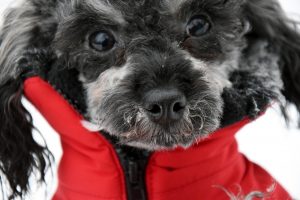 At the Springfield office, I see a wonderful little miniature poodle. He came to me with a cruciate ligament injury in the stifle (similar to ACL in the human knee). He’s a small dog and the injury wasn’t too severe, and they wanted to avoid surgery.
At the Springfield office, I see a wonderful little miniature poodle. He came to me with a cruciate ligament injury in the stifle (similar to ACL in the human knee). He’s a small dog and the injury wasn’t too severe, and they wanted to avoid surgery.
I started working on him with chiropractic. I also did acupuncture. That really helped him get through everything. He went from basically toe-touching lame to running around. It would be hard for anybody to even know which leg had a problem.
Those clients come to me at about every four to five weeks. We tried to press that out a little longer, but they found out, “Oh, that’s not a good idea.” He had a bit of a crisis. So I had to see him weekly for a while to get everything back in. We’re back to five to six weeks. I now do chiropractic and laser to make sure that we don’t have any inflammation recurrence.
Any animal can be evaluated for chiropractic care
I can’t just look at the animal and say, “You don’t need chiropractic.” I need to get my hands on the animal and do the adjustment. Then I can say, “Yeah, they were pretty good,” or, “They had a lot of little things that I had to work on. This is where I needed to focus.” So when they come for an exam, they’re going to get chiropractic treatment.
One exception – If the reason you’re bringing the animal in has nothing to do with chiropractic, they need to go back to their regular vet. I’ve had that happen before.
How do people see Dr. Foltman for animal chiropractic care?
For small animals, I work out of my farm in Hillsboro, Virginia. And on Monday afternoons, I go into the Veterinary Holistic Center in Springfield, Virginia. We have a great group of people. We share clients if we feel somebody may be able to help that pet’s problem.
I travel to see horses. Plus, horses can come to my farm. I have an office set up to see them. I don’t have a license for Maryland or West Virginia, so horse clients from those states have to come to my Hillsboro office. But I go out and visit most of my horses.
Read more: “Discover alternative veterinary services for your pets.”
Dr. Kelly Foltman, DVM, CVC, CVA
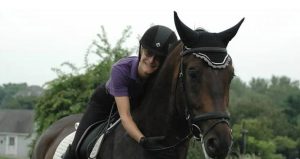 Dr. Foltman began her veterinary career in central New York in 1992 at a mixed animal practice where she focused on equine care. She successfully completed coursework in animal chiropractic in 1999.
Dr. Foltman began her veterinary career in central New York in 1992 at a mixed animal practice where she focused on equine care. She successfully completed coursework in animal chiropractic in 1999.
In 2000, she opened Willowind Farm Equine Services where she specialized in equine preventive care, breeding, and chiropractic, and chiropractic for small animals. She completed acupuncture training at the Chi Institute in 2009. From 2004 until leaving New York in 2011, she also taught disease and injury at Cazenovia College.
And in 2011, she moved to Hillsboro, Virginia where she opened Dunthorpe Farm Veterinary Services. She now specializes in acupuncture, chiropractic, and dentistry in horses; plus acupuncture and chiropractic for small animals. Dr. Foltman also utilizes therapeutic laser therapy work.
A lifelong horse enthusiastic, Dr. Foltman owns four horses with her husband and competes in dressage. She and her husband also run a small B&B on a 1790s farm in Virginia and are currently building a cider orchard and a heritage pig farm.
You can reach Dr. Foltman for an appointment by emailing info@dunthorpeveterinary.com or leaving a message at (540) 668-6232.

